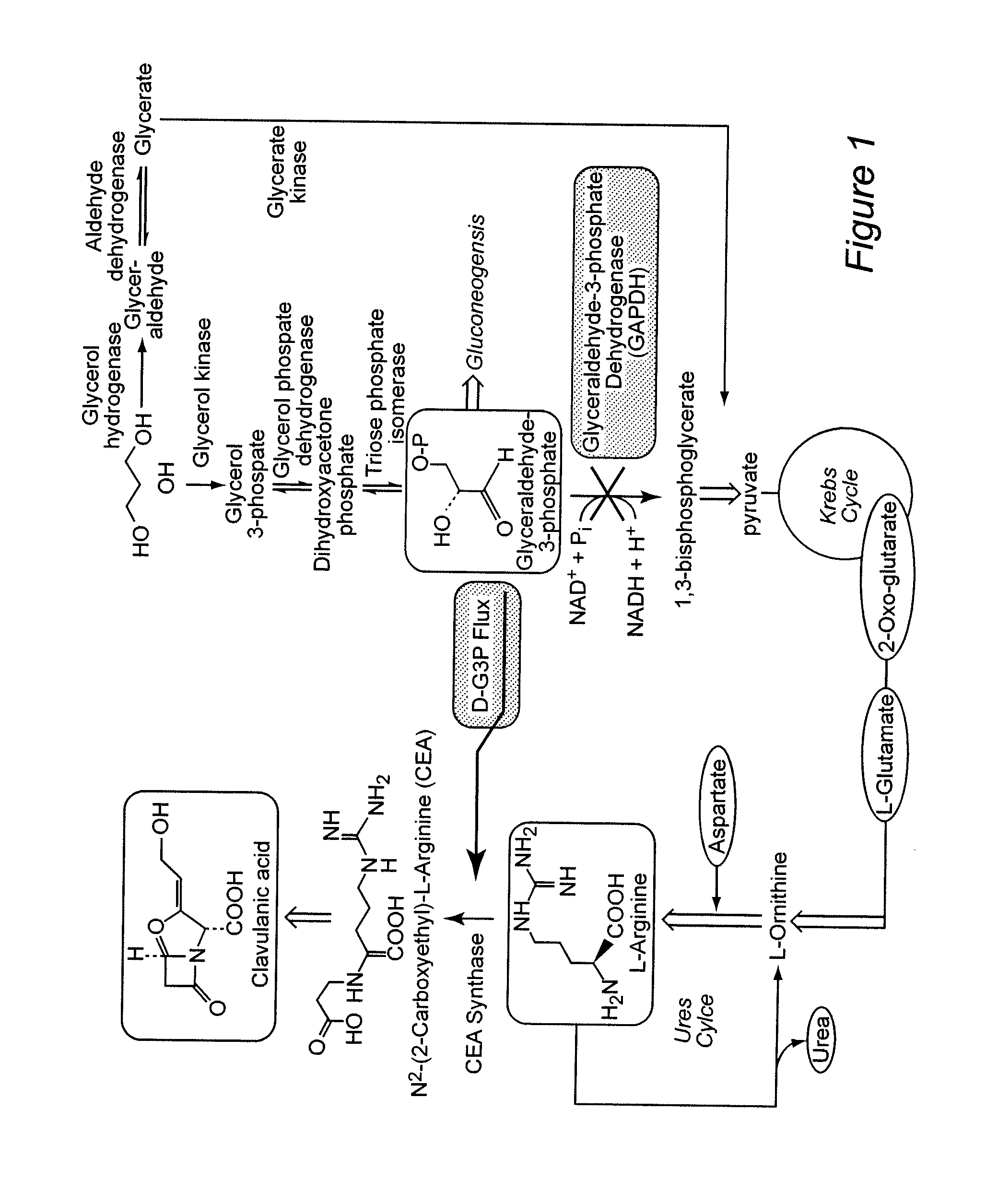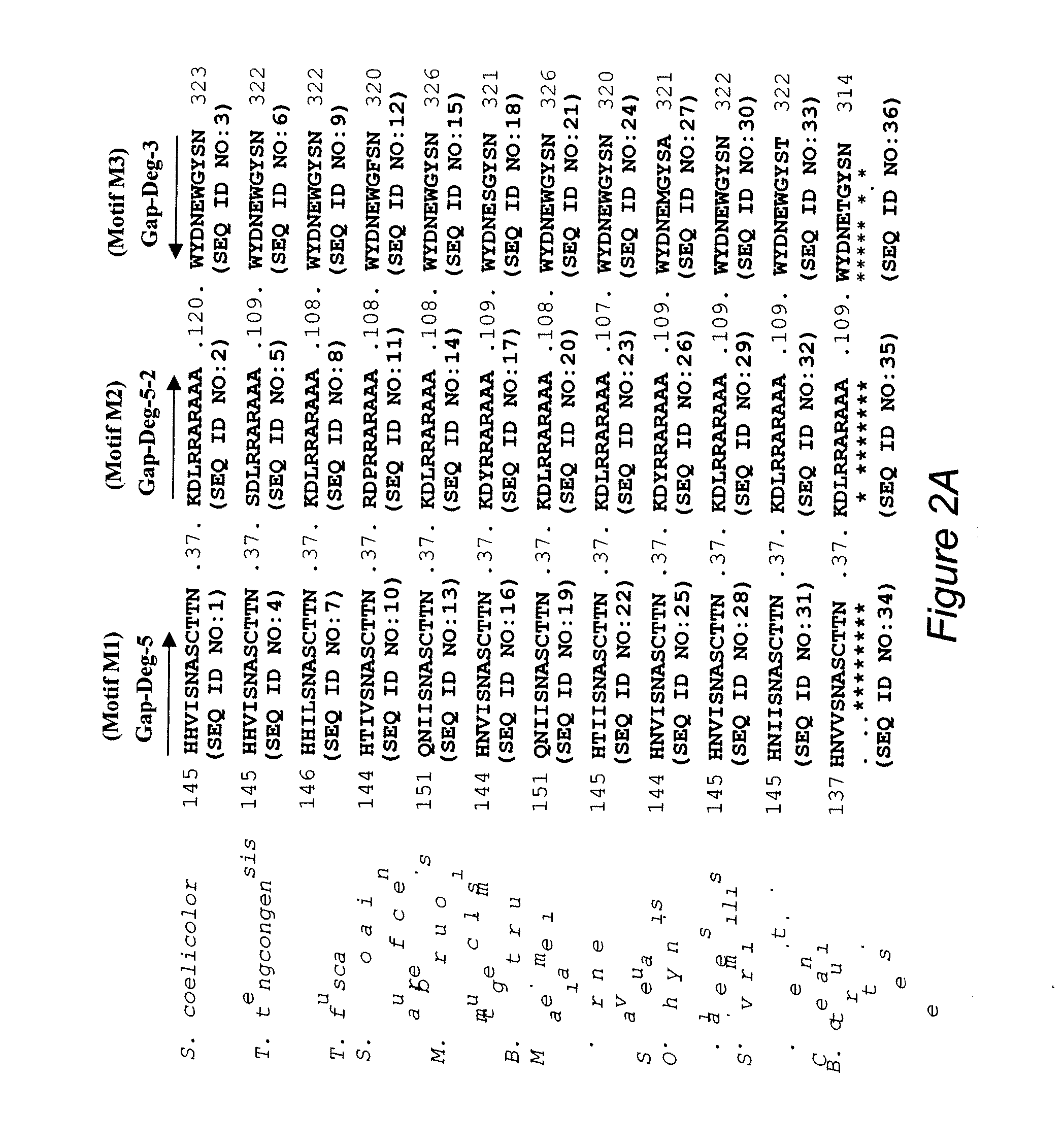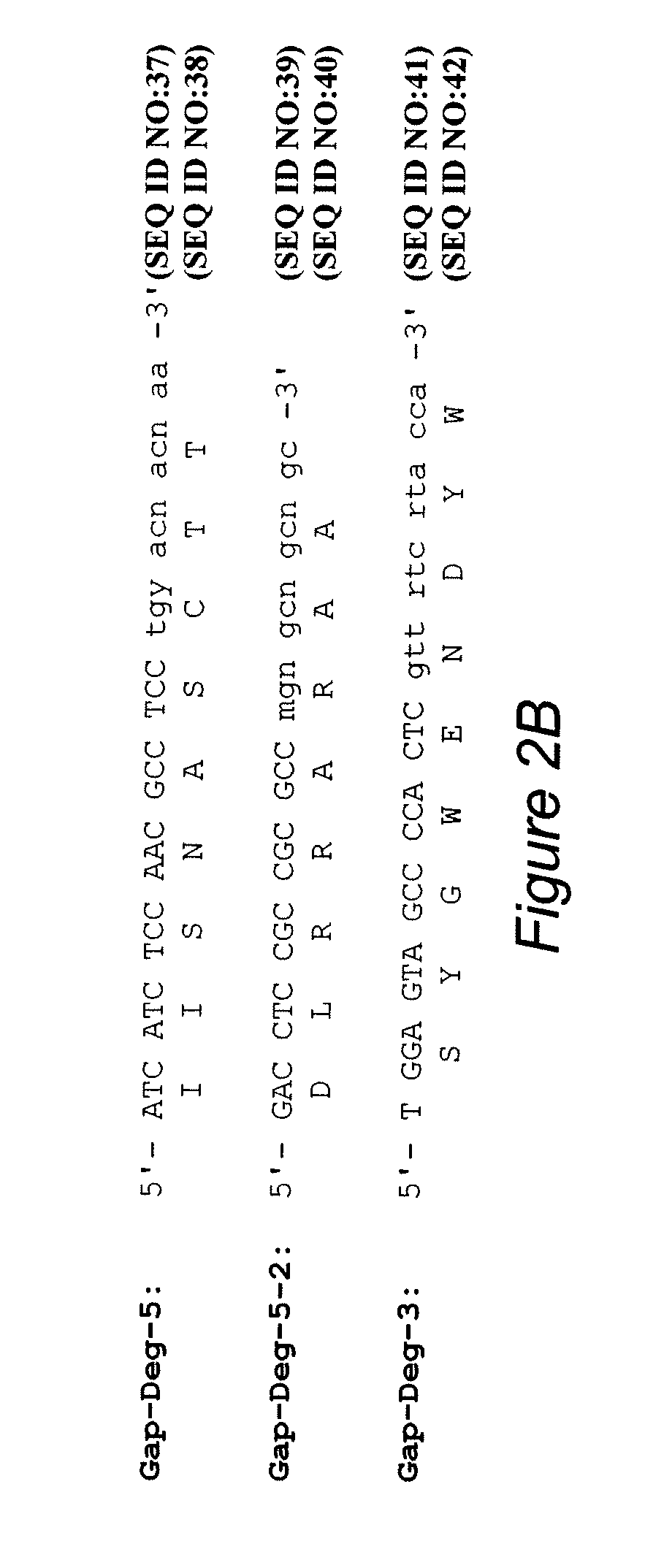Production of clavulanic acid by genetic engineering of Streptomyces clavuligerus
a technology of genetic engineering and clavulanic acid, which is applied in the field of genetic engineering to improve the production of clavulanic acid in streptomyces clavuligerus, can solve the problems of reducing the effectiveness of the new generation of high-production strains, introducing a limited spectrum of base-pair substitutions that do not readily solve the specific rate limitations of biosynthetic pathways, and reducing the number of new high-production strains. the effect of efficiency
- Summary
- Abstract
- Description
- Claims
- Application Information
AI Technical Summary
Benefits of technology
Problems solved by technology
Method used
Image
Examples
examples
[0043] Clavulanic acid is a potent β-lactamase inhibitor used to combat resistance to penicillin and cephalosporin antibiotics. There is a demand for high-yielding fermentation strains for industrial production of this valuable product. Clavulanic acid biosynthesis is initiated by the condensation of L-arginine and D-glyceraldehyde-3-phosphate (G3P). To overcome the limited G3P pool and improve clavulanic acid production, the glycolytic pathway in Streptomyces clavuligerus was genetically engineered. Two genes (gap1 and gap2) whose protein products are distinct glyceraldehyde-3-phosphate dehydrogenases (GAPDHs) were inactivated in S. clavuligerus by targeted gene disruption. A doubled production of clavulanic acid was consistently obtained when gap1 was disrupted, and reversed by complementation. Addition of arginine to the cultured mutant further improved clavulanic acid production giving a greater than 2-fold increase over wild-type, suggesting that arginine became limiting for bi...
PUM
| Property | Measurement | Unit |
|---|---|---|
| resistance | aaaaa | aaaaa |
| acid production | aaaaa | aaaaa |
| energy | aaaaa | aaaaa |
Abstract
Description
Claims
Application Information
 Login to View More
Login to View More - R&D
- Intellectual Property
- Life Sciences
- Materials
- Tech Scout
- Unparalleled Data Quality
- Higher Quality Content
- 60% Fewer Hallucinations
Browse by: Latest US Patents, China's latest patents, Technical Efficacy Thesaurus, Application Domain, Technology Topic, Popular Technical Reports.
© 2025 PatSnap. All rights reserved.Legal|Privacy policy|Modern Slavery Act Transparency Statement|Sitemap|About US| Contact US: help@patsnap.com



